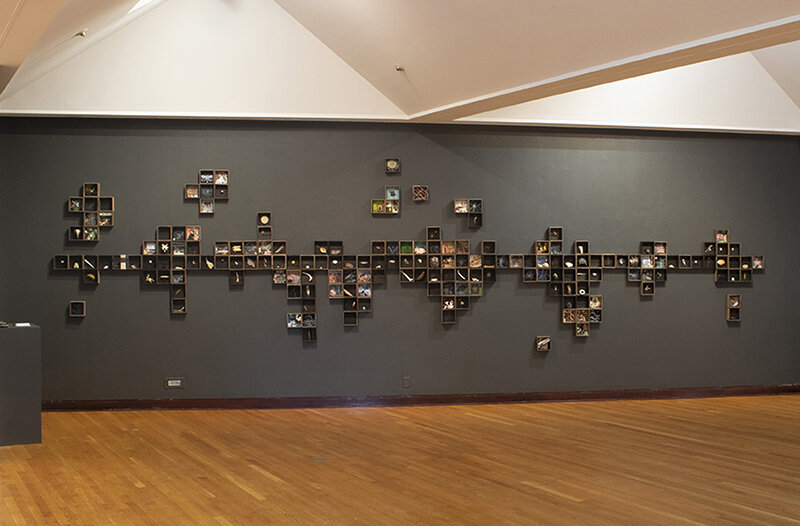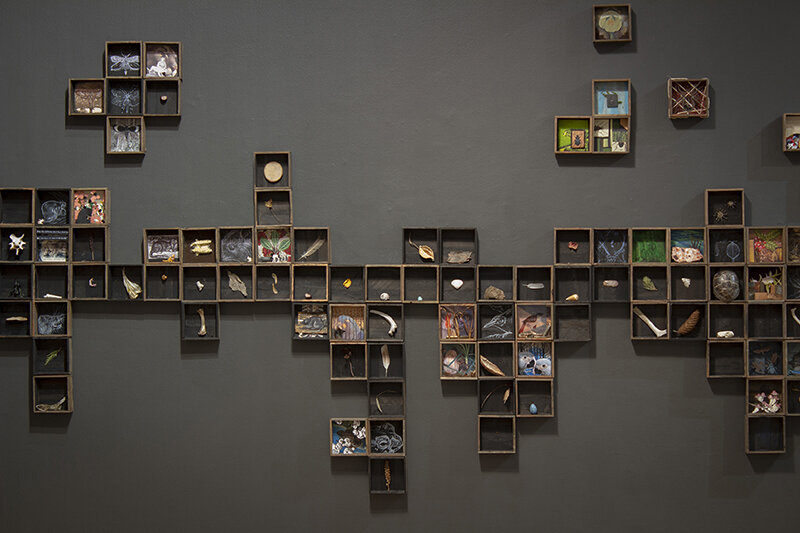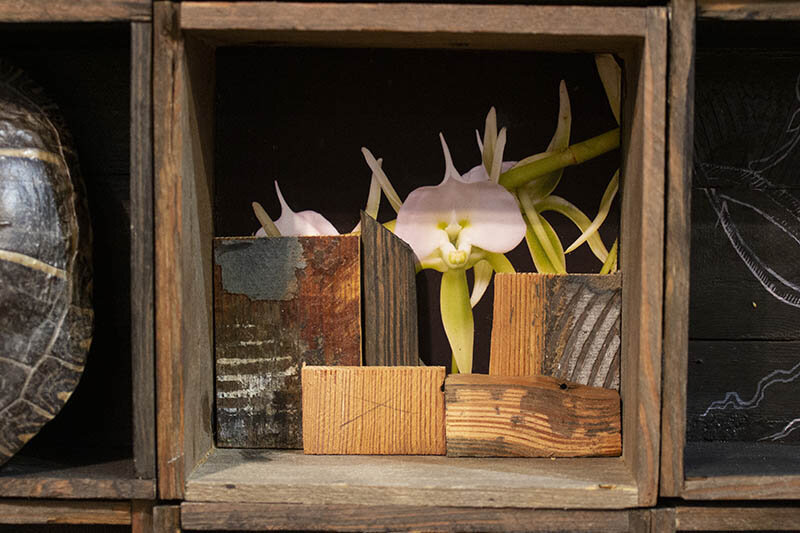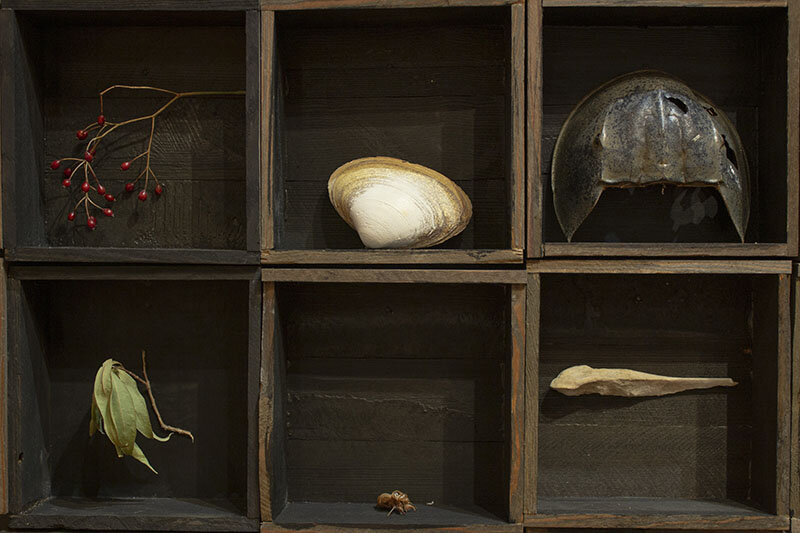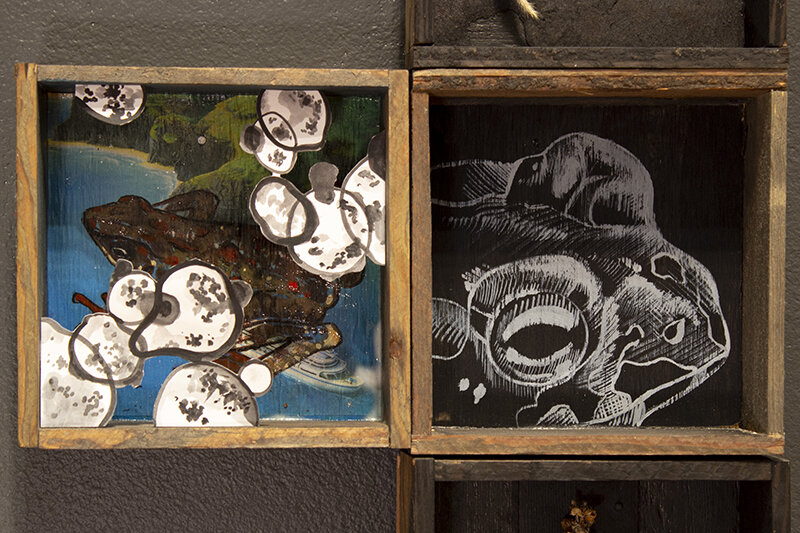Artist Reflection | Sophy Tuttle
Sophy Tuttle lives and works in Massachusetts. Weaving science with art, Sophy uses her practice as a tool for environmental advocacy. She works across publicly accessible formats such as murals and more intimate installations, drawings, and paintings to encourage people to look at the natural world as a site of both scientific and aesthetic discourse.
Sophy received a BFA from the Rhode Island School of Design and an MFA in Interdisciplinary Art from the Hartford Art School. She has recently shown her work at Gallery 263, Cambridge, MA (2020, 2018); Curation 250, Lowell, MA (2020); University of Colorado Boulder Art Museum, Boulder, CO (2020); and Swale House, Governor’s Island, NY (2019). Among other honors, she is the recipient of the People’s Choice Award from the Salem Arts Festival (2018). In fall 2020, she will participate in the Goetemann Artist Residency at Rocky Neck Artist Colony, Gloucester, MA.
Here, she reflects on her ongoing project, Solastalgia, begun in 2019, and how its meaning has evolved amidst the COVID-19 pandemic.
As an artist working in the public realm (and as a human living on Earth), the pandemic has been a huge interruption to my busy schedule. At first, the total loss of all the intricately planned shows, workshops, and installations that make up a working artist’s life induced a sense of panic and fear. I realized very quickly, however, that all my newfound free time could be used as an opportunity for introspection—a chance to check in on my practice and assess how I was tending to my core values as an artist.
One of those values is the exploration of personal resilience in the face of the man-made Anthropocene era. In my work, I find myself constantly responding to the effects of this unprecedented time in Earth's history. I reflect on climate change, pollution, biodiversity loss, and the finality of extinction. The stress many of us feel from these challenges has woven itself into the very fabric of our daily lives. The pandemic has added another thick layer to this blanket of anxiety we are so tightly wrapped in.
I often find action and creation are the only ways to interrupt the cycle of worry, grief, or sadness I’m grappling with. The challenge for me, then, is how to amplify these soothing actions to a community-wide scale. Looking through the lens of a culture-maker, I can see that I have the ability to absorb these troubled feelings from others and transmute them into something positive, cathartic, and relatable to the rest of my community.
This is where the impetus for my installation Solastalgia (2019-ongoing) came from. As I approached the end of my graduate studies in social and environmental justice through art, I was overwhelmed with the information I had taken in over the past two years. I had spent some time researching how ritual plays a role in healing but also understood that as a worldwide culture we don’t really have any way to grieve for the colossal-scale losses we are experiencing right now. The term Solastalgia, coined by environmental researcher Glenn Albrecht, is “the distress that is produced by environmental change impacting people while they are directly connected to their home environment”. [1]
I decided to build an installation that could act as a memorial, similar to those present in many of today’s ancient faiths. Solastalgia memorializes the estimated 150-200 species that go extinct every day on Earth. 86% of the species on land and 91% in the ocean have yet to be scientifically identified and named. Many will disappear before we have the chance to know them.
The memorial commemorates all of the species officially classified in 2018 as “Extinct,” “Extinct in the Wild,” or “Critically Endangered (Possibly Extinct in the Wild)” in reports from various organizations such as The International Union for Conservation of Nature and BirdLife International. By using this classifying system, I implicate the human hand in the rapid rate of extinction while highlighting the anthropocentric desire to officially record the name and status of a species in order to document and recognize its loss. There are 74 species represented on the wall, leaving 124 blank spaces for the unknown species that never came into contact with the scientific community.
The use of natural objects, textbook illustrations, and the gridded display structure recall Western anthropogenic impulses to classify, study, and organize the chaos of “nature,” much like the cabinet of curiosities format originating in the 17th century. While I wish for this monument to be a vessel for holding grief, I would also like it to be a source of reflection on the causes of the Sixth Extinction—the global mass die-off of species we are currently witnessing. Since Aristotle, Western thought has maintained the position that man is superior to all other forms of life. Therefore, many of us view the capture, use, and extermination of other species as a distant and scientific endeavor. My intention with Solastalgia is to reimagine our domination-based relationship with other species and consider how it would be reconfigured if we were able to pay the same amount of respect to our fellow creatures as we do to our own dead.
The form and structure of Solastalgia are informed by the Día de los Muertos altars I encountered while living in Oaxaca, Mexico, as well as elements from natural history museological displays. I was struck by the deep reverence the Mexican altars inspired in me and wanted to capture that sentiment in my own work. Each reclaimed pine box is hand-built and includes collage, painting, and found objects that refer to the intricate life of the species as well as the contributing factors to its death. In this way, the installation is both a lament of loss and a celebration of life.
The accompanying “Guide to Grief in the Anthropocene” (2019) is a pictorial synthesis of scientific information from the IUCN reports and my own personal reactions. It includes ways of coping with such overwhelming information in a regenerative way. This book is not only an aid for inner-healing through grief and acceptance but also an inspiration for action once that healing has occurred.
Each time I install the memorial, I have the opportunity to give workshops and have discussions with the community. To me, this work is just as important and cathartic as the solitary building of the installation. The insightful interactions I have with kids and teens already so knowledgeable about the issues do a lot to allay my anxieties. This Great Pause we have been forced into by the pandemic has helped me to solidify my resolve to continue working on these often heart-wrenching topics. Before the pandemic, I was questioning whether I wanted to continue with this difficult work. But I have since realized that it is also the most rewarding, and I consider myself lucky to be able to explore these themes as an artist, maker, and human being.
Sophy Tuttle can be reached at sophy(@)sophytuttle.com.
[1] Albrecht, Glenn & Sartore, Gina & Connor, Linda & Higginbotham, Nick & Freeman, Sonia & Kelly, Brian & Stain, Helen & Tonna, Anne & Pollard, Georgia. (2007). “Solastalgia: The Distress Caused by Environmental Change.” Australasian Psychiatry: Bulletin of Royal Australian and New Zealand College of Psychiatrists. 15 Suppl 1. S95-8. 10.1080/10398560701701288. https://www.researchgate.net/publication/5820433_Solastalgia_The_Distress_Caused_by_Environmental_Change

